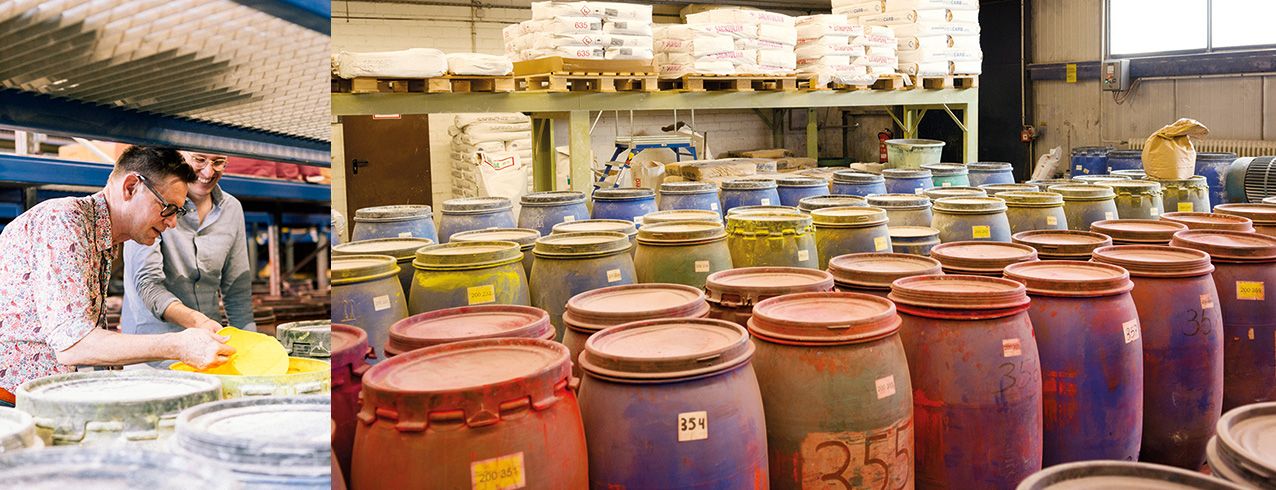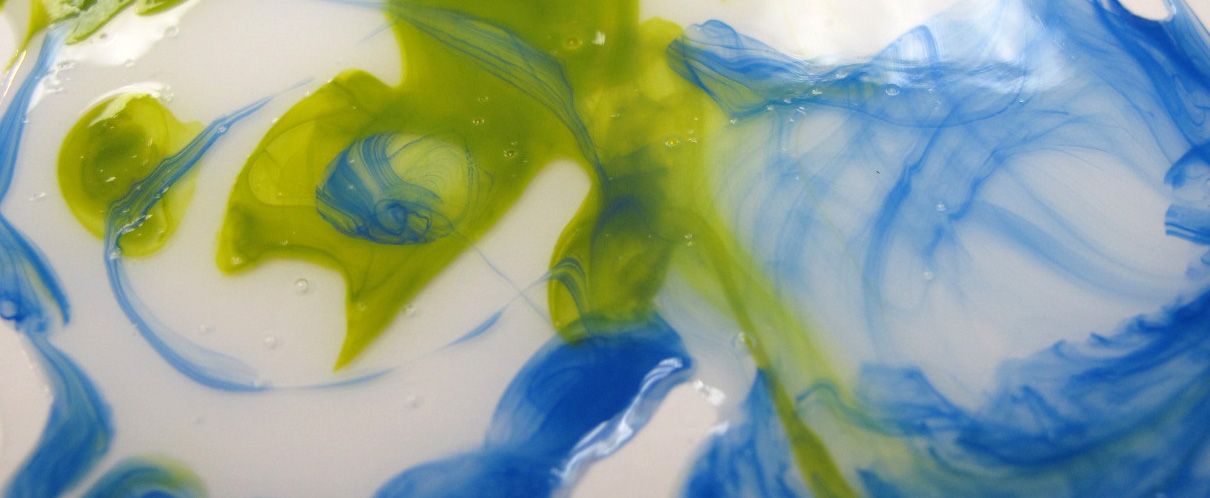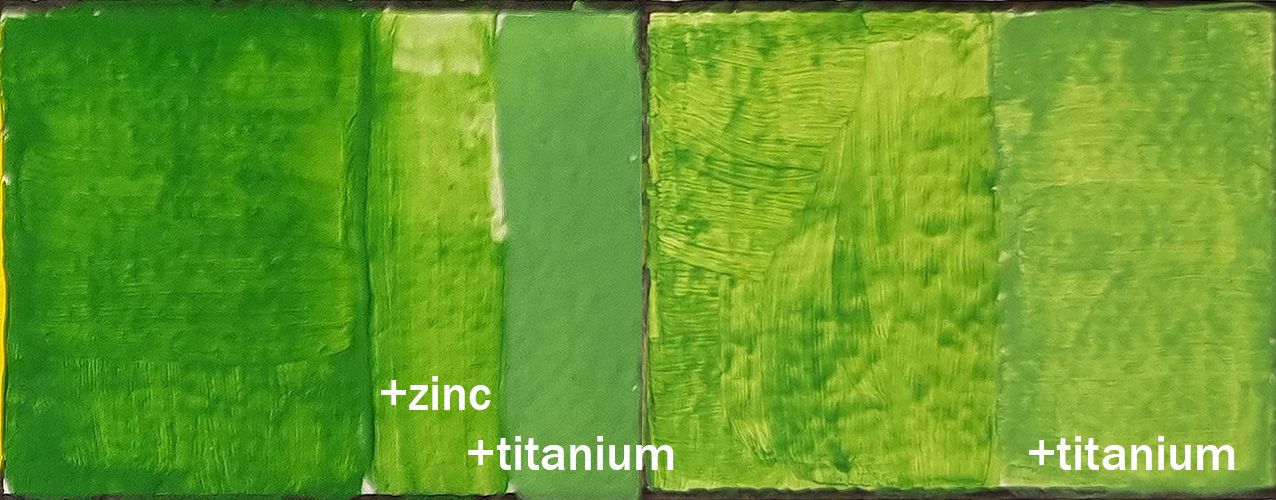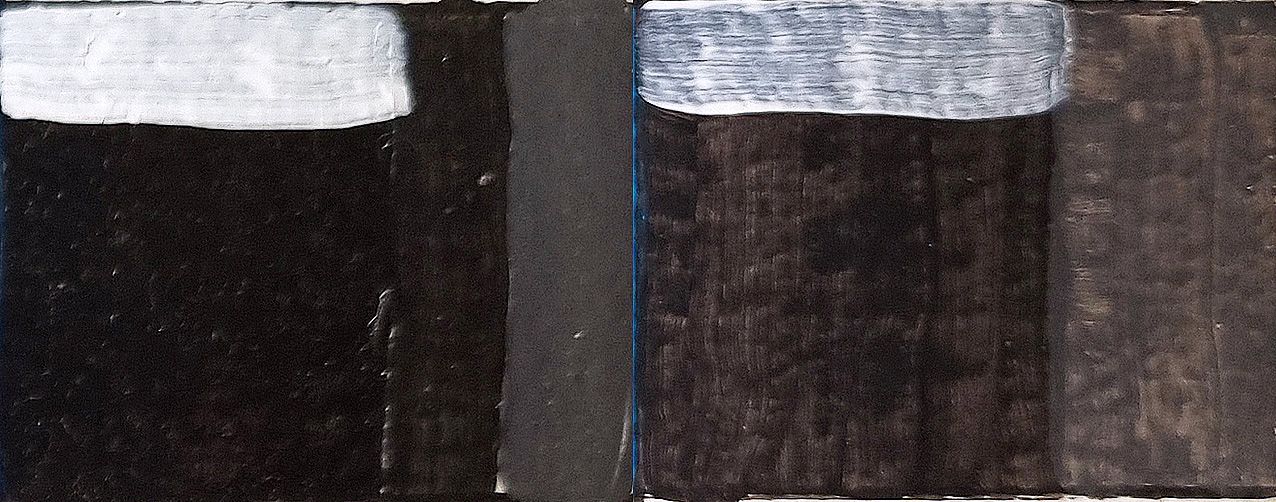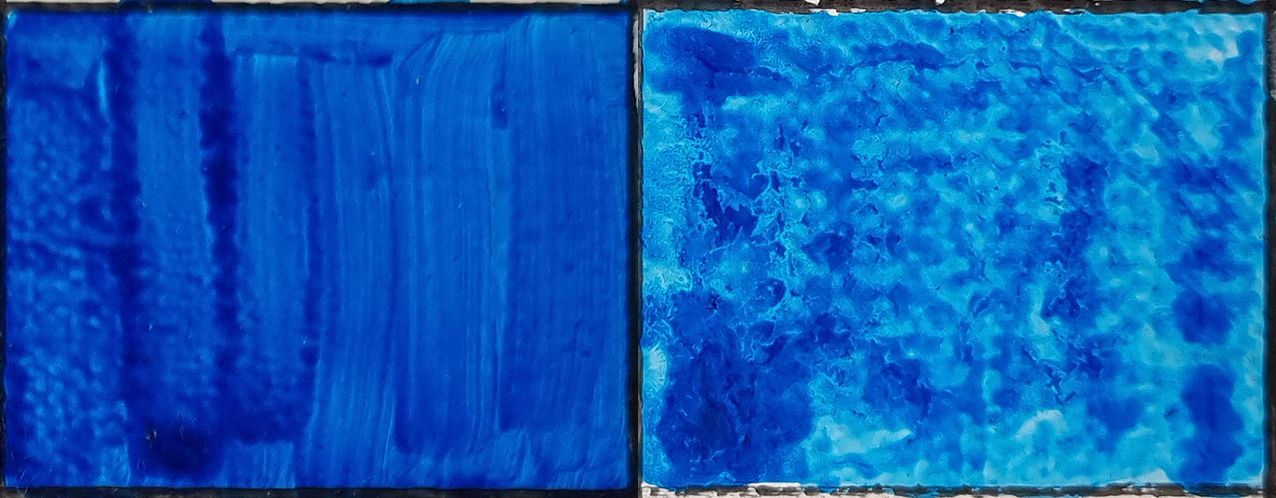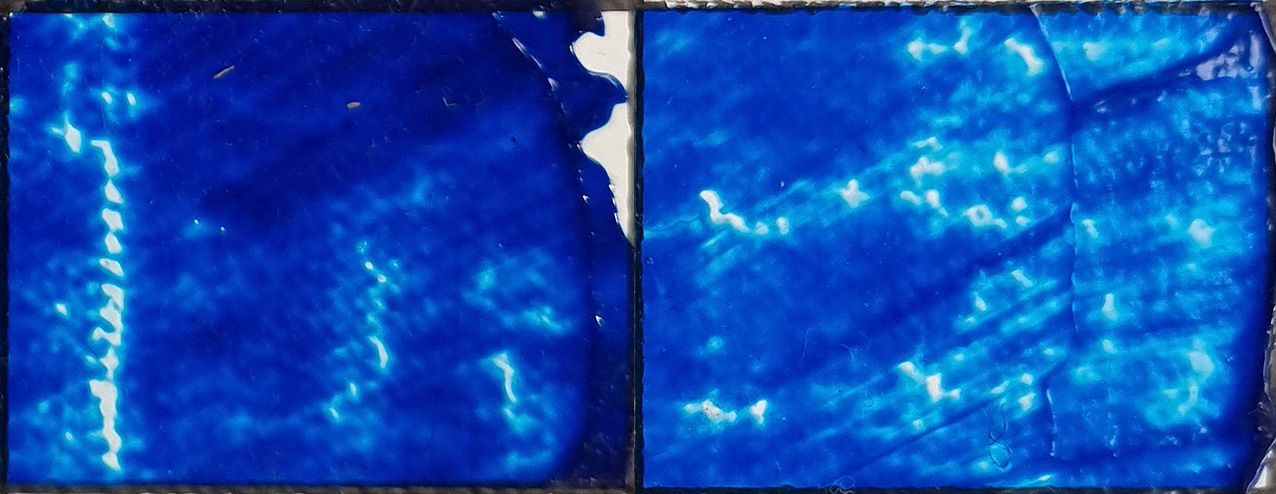Shop Now
-
ACRYLIC PAINTS & MEDIUMS
- Specials
- New Arrivals
- Featured
- Clearance
- ART SPECTRUM ACRYLIC MEDIUMS
- ART SPECTRUM COLOURFIX PRIMER
- ATELIER MEDIUMS
- AUREUO ACRYLIC PAINT SETS
- CHROMACRYL MEDIUMS
- CHROMACRYL STUDENT ACRYLIC
- DERIVAN MEDIUMS
- DERIVAN STUDENT ACRYLIC PAINT
- FLASHE
- FLUID WRITER PENS
- GOLDEN FLUID ACRYLIC
- GOLDEN HEAVY BODY ACRYLIC
- GOLDEN HIGH FLOW ACRYLIC
- GOLDEN MEDIUMS & VARNISHES
- GOLDEN OPEN ACRYLIC
- GOLDEN SOFLAT MATTE ACRYLIC
- MATISSE BACKGROUND
- MATISSE MEDIUMS
- MATISSE STRUCTURE
- NAM VARNISHES
- PEBEO ACRYLIC MEDIUMS
- PEBEO ORIGIN ACRYLIC
- PEBEO STUDIO ACRYLIC
- SCHMINCKE ACRYLIC MEDIUMS
- SCHMINCKE AEROCOLOR ACRYLIC
- SCHMINCKE AKADEMIE ACRYLIC
- SCHMINCKE PRIMACRYL PROFESSIONAL ACRYLIC
- WINSOR & NEWTON ACRYLIC MEDIUMS
- WINSOR & NEWTON ARTISTS ACRYLIC
- AIRBRUSHES
- ART ACCESSORIES
- ART BAGS, PORTFOLIOS & PRESENTATION
- BOARD & CARD
-
BOOKS
- New Arrivals
- BOOKS ACRYLIC PAINTING
- BOOKS ARCHITECTURE
- BOOKS ART AND CRAFT KITS
- BOOKS CHARACTER DESIGN
- BOOKS COLOUR THEORY
- BOOKS COLOURING BOOKS
- BOOKS CREATIVE KIDS
- BOOKS DRAWING
- BOOKS FASHION & TEXTILES
- BOOKS FIGURE DRAWING
- BOOKS FLORA AND FAUNA
- BOOKS GRAPHIC DESIGN
- BOOKS HAND LETTERING
- BOOKS ILLUSTRATION
- BOOKS KAWAII
- BOOKS LOGO DESIGN
- BOOKS MANGA
- BOOKS MIXED MEDIA
- BOOKS MONOGRAPHS
- BOOKS MOTIVATIONAL
- BOOKS NZ AOTEAROA ART
- BOOKS OIL PAINTING
- BOOKS ORIGAMI
- BOOKS PACKAGING DESIGN
- BOOKS PAPER ARTS
- BOOKS PHOTO TECHNIQUES
- BOOKS PHOTOGRAPHY
- BOOKS PRINTMAKING
- BOOKS PRODUCT DESIGN
- BOOKS PUZZLES AND GAMES
- BOOKS SCULPTURE AND CLAY
- BOOKS STREET ART
- BOOKS TYPOGRAPHY
- BOOKS URBAN SKETCHING
- BOOKS WATERCOLOUR PAINTING
-
BRUSHES & PALETTE KNIVES
- Specials
- New Arrivals
- Clearance
- BAMBOO BRUSHES
- BRUSH SOAP & CLEANERS
- BRUSH STANDS & STORAGE
- COLOUR SHAPERS
- DA VINCI BLACK SABLE BRUSHES
- DA VINCI BRISTLE BRUSHES
- DA VINCI BRUSH SETS
-
DA VINCI CASANEO WATERCOLOUR BRUSH
- DA VINCI CASANEO FLAT BRUSH
- DA VINCI CASANEO LINER BRUSH
- DA VINCI CASANEO MINI BRUSHES
- DA VINCI CASANEO MOTTLER
- DA VINCI CASANEO OVAL BRUSH
- DA VINCI CASANEO POCKET TRAVEL BRUSH
- DA VINCI CASANEO RIGGER BRUSH
- DA VINCI CASANEO ROUND BRUSH
- DA VINCI CASANEO SHORT STROKE BRUSH
- DA VINCI CASANEO SLANT EDGE BRUSH
- DA VINCI CASANEO WASH BRUSH
- DA VINCI CHUNEO SYNTHETIC BRISTLE BRUSHES
- DA VINCI COLINEO OIL & ACRYLIC LONG HANDLED BRUSHES
-
DA VINCI COLINEO WATERCOLOUR BRUSHES
- DA VINCI COLINEO WATERCOLOUR BRUSH FAN
- DA VINCI COLINEO WATERCOLOUR BRUSH FLAT
- DA VINCI COLINEO WATERCOLOUR BRUSH RETOUCHING
- DA VINCI COLINEO WATERCOLOUR BRUSH RIGGER
- DA VINCI COLINEO WATERCOLOUR BRUSH ROUND
- DA VINCI COLINEO WATERCOLOUR BRUSH SLANTED
- DA VINCI COLINEO WATERCOLOUR BRUSH WASH
- DA VINCI COLINEO WATERCOLOUR BRUSH X POINT
- DA VINCI COSMOTOP MIX BRUSHES
- DA VINCI COSMOTOP NOVA BRUSHES
- DA VINCI COSMOTOP SPIN BRUSHES
- DA VINCI COSMOTOP WASH BRUSHES
- DA VINCI DRY BRUSHES SYNTHETIC
- DA VINCI FORTE BRUSHES
- DA VINCI IMPASTO BRUSHES
- DA VINCI JUNIOR SYNTHETIC BRUSHES
- DA VINCI KOLINSKY RED SABLE BRUSHES
- DA VINCI LETTERING BRUSHES
- DA VINCI MAESTRO2 BRISTLE BRUSHES
- DA VINCI MICRO BRUSHES
- DA VINCI SPECIAL BRUSHES
- DA VINCI SQUIRREL/WASH BRUSHES
-
DA VINCI STUDENT BRUSHES
- DA VINCI COLLEGE BRUSH FILBERT
- DA VINCI COLLEGE BRUSH FLAT
- DA VINCI COLLEGE BRUSH ROUND
- DA VINCI FIT HOBBY BRUSH FILBERT
- DA VINCI FIT HOBBY BRUSH FLAT
- DA VINCI FIT HOBBY BRUSH ROUND
- DA VINCI FIT HOBBY SYNTHETIC MOTTLER BRUSH
- DA VINCI FIT SYNTHETIC BRISTLE BRUSH FLAT
- DA VINCI FIT SYNTHETIC BRISTLE BRUSH ROUND
- DA VINCI STUDENT BRISTLE ROUND
- DA VINCI TOP-ACRYL BRUSHES
- ESSDEE SPONGE ROLLERS
- EXPRESSION BRUSHES
- JASART 577 ETERNA BRUSH
- JASART HOG BRISTLE BRUSHES
- JASART MOP & STENCIL BRUSHES
- PALETTE KNIVES
- PEBEO BRUSH SETS
- PEBEO IRIS BRUSHES
- PEBEO MOTTLER BRUSHES
- WINSOR & NEWTON COTMAN WATERCOLOUR BRUSHES
- WINSOR & NEWTON GALERIA BRUSHES
- WINSOR & NEWTON SCEPTRE GOLD BRUSHES
- WINSOR & NEWTON SERIES 7 BRUSHES
- WINSOR & NEWTON WINTON BRUSHES
-
CANVAS & PANELS
- Specials
- CANVAS ROLLS
- CANVAS STRETCHING TOOLS
- CEDAR STRETCHER BARS
- EXPRESSION CANVAS PANELS
- EXPRESSION FLOATING CANVAS FRAMED
- EXPRESSION STRETCHED CANVAS
- FREDRIX STRETCHED CANVAS, PANELS, PADS
- MUSEO LINEN CANVAS
- MUSEUM STRETCHED CANVAS
- NAM NATURAL LINEN CANVAS
- NAM ROUND CANVAS PANELS
- PINE STRETCHER BARS & BRACES
- PRO-PANELS
- SKATEBOARD DECK ART BOARD
- STRETCHED WITH LOVE CANVAS
- CERAMIC PAINT
- DRAWING BOARDS,STANDS & TABLES
- EASELS
- ENCAUSTIC PAINTS & MEDIUMS
- ENVELOPES
- FABRIC PAINT, DYES & ACCESSORIES
- FACE & BODY PAINT
- FOAMBOARD
- GIFT CARDS
- GLASS PAINT
- GOUACHE PAINTS
- INKS
-
KNIVES & CUTTING TOOLS
- Specials
- New Arrivals
- Clearance
- DAFA CUTTING TOOLS
- DAFA RULERS
- DESIGN PEN KNIFE
- EXCEL KNIVES & CARVING TOOLS
- EXPRESSION CUTTING MATS
- FISKARS CUTTING TOOLS
- LEDAH TRIMMERS & GUILLOTINES
- LOGAN CUTTING & FRAMING TOOLS
- REVOLVING LEATHER PUNCH
- SCISSORS
- SNAP BLADE KNIVES & BLADES
- SWANN MORTON SCALPEL KNIVES & BLADES
- LIGHT PADS, LIGHTBOXES & LIGHTING
-
MARKERS & PENS
- Specials
- New Arrivals
- Featured
- Clearance
- ARTLINE PENS
- AUREUO ALCOHOL TWIN TIP MARKER SETS
- CALLIGRAPHY PENS & NIBS
- CLASS PACKS MARKERS & PENS
- COPIC CIAO MARKERS
- COPIC CLASSIC MARKERS
- COPIC GASENFUDE BRUSH PENS
- COPIC MULTI LINERS
- COPIC REFILL INKS
- COPIC SKETCH MARKERS
- CORRECTION TAPES & PENS
- FABER CASTELL ALBRECHT DURER WATERCOLOUR MARKERS
- FABER CASTELL BLACK EDITION SHAKE & PAINT MARKER
- FABER CASTELL CONNECTOR PEN SETS
- FABER CASTELL GRIP PLUS BALL PENS
- FABER CASTELL PITT ARTIST DUAL MARKER
- FABER CASTELL PITT ARTIST PENS
- ICON PENS & MARKERS
- INDIGRAPH FOUNTAIN PENS
- LAMY PENS
- LEUCHTTURM 1917 DREHGRIFFEL BALLPOINT PENS
- MARKER WALLETS & STORAGE
- MOLOTOW BLACKLINER PIGMENT LINER PENS
- MOLOTOW BURNER MARKERS
- MOLOTOW CHALK MARKERS - REFILLABLE
- MOLOTOW DRIPSTICKS
- MOLOTOW EXCHANGE TIPS
- MOLOTOW GRAFX MASKING LIQUID
- MOLOTOW LIQUID CHROME MARKERS
- MOLOTOW MASTERPIECE PAINT MARKERS
- MOLOTOW ONE4ALL PAINT MARKERS
- MOLOTOW SKETCHER MARKERS
- PEBEO 4ARTIST OIL BASED PAINT MARKERS
- PEBEO COLOREX WATERCOLOUR INK MARKERS
- PENTEL PENS
- PILOT MR SERIES PENS
- PILOT PENS
- POSCA MARKERS
- ROTRING PENS
- SCHMINCKE AERO LINER EMPTY MARKERS
- SCHNEIDER
- SHARPIE
- SHARPIE CREATIVE MARKER SETS
- STAEDTLER COLOUR FIBRE TIP PEN
- STAEDTLER DESIGN JOURNEY MARKER SETS
- STAEDTLER LUMOCOLOR MARKERS
- STAEDTLER MARS MATIC TECH PENS
- STAEDTLER PIGMENT ARTS PEN
- STAEDTLER PIGMENT LINER
- STAEDTLER TEXTSURFER HIGHLIGHTERS
- STAEDTLER TRIPLUS FINELINERS
- STAEDTLER WRITING PENS
- TEXTA LIQUID CHALK MARKERS
- TOMBOW DUAL BRUSH PENS
- TOMBOW FUDENOSUKE PENS
- U-KNOCK XQ GEL PEN
- UNI PENS & MARKERS
- WINSOR & NEWTON BRUSH MARKERS
- WINSOR & NEWTON PROMARKERS
- ZIG PENS
-
MODELLING , SCULPTING, CLAY & RESIN
- Specials
- New Arrivals
- Featured
- Clearance
- 3D PRINTING FILAMENT
- BALSA & BASSWOOD
- CHAVANT MODELLING CLAY
- CLAY SHAPERS
- CLAYTOON NON-HARDENING MODELLING CLAY
- DAS MODELLING CLAY
- ESSDEE ALUMINIUM ROLLERS
- EXCEL MODELLING TOOLS
- EXPRESSION MODELLING TOOLS
- FIMO
- FIMO AIR-DRY MODELLING CLAY
- FIMO EFFECT
- FIMO KIDS
- FIMO LEATHER-EFFECT
- FIMO PROFESSIONAL
- FIMO TOOLS & ACCESSORIES
- GEDEO CLAY, RESIN & MOULDING
- HOT WIRE FOAM TOOLS
- JOVI AIR HARDENING CLAY
- K&S METALS
- KIWI UNDERGLAZE
- MACS MUD CLAYS
- MDF BOARD & PLYWOOD PANELS
- MILLIPUT EPOXY PUTTY
- MISCELLANEOUS MODELLING TOOLS
- MODELLING COMPOUNDS & PLASTER
- MODELLING WIRE
- NORSKI RESINS & ACCESSORIES
- PEBEO FLUID PIGMENTS FOR RESINS
- PLASTALINA NON-HARDENING MODELLING CLAY
- PLASTIC SHEET PRODUCTS
- POP STICKS
- PROTOLINA NON-HARDENING MODELLING CLAY
- RGM SCULPTING TOOLS
- SCULPEY CLAYS
- SCULPEY LIQUID BAKEABLE CLAY
- SCULPEY PREMO CLAY
- SCULPEY SOUFFLE CLAY
- SCULPEY TOOLS & ACCESSORIES
- SCULPEY ULTIMATE DIY KITS
- WOODEN SHEETS & STICKS
-
OIL PAINTS & MEDIUMS
- Specials
- New Arrivals
- Clearance
- ART SPECTRUM ARTIST OILS
- ART SPECTRUM OIL MEDIUMS
- CHROMA ARCHIVAL OIL MEDIUMS
- EXPRESSION WATERSOLUBLE OIL STICKS
- FIVE STAR OIL MEDIUMS
- GAMBLIN MEDIUMS
- MAIMERI CLASSICO OIL
- MICHAEL HARDING OILS
- OLD HOLLAND OIL COLOURS
- PEBEO OIL MEDIUMS
- PEBEO XL OIL
- R&F PIGMENT OIL PAINT STICKS
- SCHMINCKE ARTIST OIL FLAKE WHITE
- SCHMINCKE MUSSINI OIL
- SCHMINCKE NORMA BLUE WATER-MIXABLE OIL
- SCHMINCKE NORMA PROFESSIONAL OIL
- SCHMINCKE OIL MEDIUMS
- SHELLAC
- TMK SOLVENTS & SPIRITS
- WILLIAMSBURG OIL
- WINSOR & NEWTON ARTISAN WATER MIXABLE OILS
- WINSOR & NEWTON ARTISTS OILS
- WINSOR & NEWTON GRIFFIN ALKYD FAST DRYING OIL COLOUR
- WINSOR & NEWTON OIL MEDIUMS
- WINSOR & NEWTON WINTON OILS
- PACKAGING PRODUCTS
-
PADS, BLOCKS & PACKS
- Specials
- New Arrivals
- Clearance
- ARCHES PADS & BLOCKS
- AWAGAMI WASHI PACKS
- BOCKINGFORD PADS
- CANSON PADS & BLOCKS
- CLAIREFONTAINE PASTELMAT PADS
- COLOURFIX PADS & PACKS
- FABRIANO PADS, PACKS & BLOCKS
- GORDON HARRIS PADS
- GRAPH PAPER PADS & SHEETS
- HAHNEMUHLE PADS, PACKS AND BLOCKS
- LANA FINE ART PAPER PADS & PACKS
- MAGNANI BLOCKS & PADS
- MOLOTOW MARKER PADS
- WARWICK EXERCISE BOOKS & PADS
- WINSOR & NEWTON MARKER PADS
- X-PRESS IT BLENDING PADS
- PANTONE GUIDES
- PAPER & CARD COLOURED
- PAPER ACCESSORIES
-
PAPER FINE ART
- Specials
- New Arrivals
- Clearance
- ARCHES FINE ART PAPERS
- AWAGAMI FINE ART PAPERS
- CANSON MI-TEINTES PAPER
- CANSON WATERCOLOUR PAPERS
- CARTRIDGE PAPER
- COLOURFIX PAPER
- EXPRESSION RENDERING PAPER
- FABRIANO FINE ART PAPERS
- GLASSINE PAPER
- HAHNEMUHLE FINE ART PAPER - ROLLS
- HAHNEMUHLE FINE ART PAPER - SHEETS
- KHADI PRINTMAKING PAPER
- LANA FINE ART PAPERS
- MAGNANI FINE ART PAPERS
- NEWSPRINT PAPER
- SCHOOL ART PAPER & CARD
- YUPO SYNTHETIC PAPER
-
PASTELS & PASTEL PENCILS
- Specials
- New Arrivals
- Clearance
- CARAN D'ACHE NEOPASTEL
- CRETACOLOR PASTEL STICKS
- DERWENT PASTEL PENCIL SETS
- FABER CASTELL PITT PASTEL PENCILS
- FABER CASTELL POLYCHROMOS PASTELS
- HARD & SOFT PASTELS
- MUNGYO OIL PASTELS
- MUNGYO SEMI-HARD PASTELS
- MUNGYO SOFT PASTELS
- NAM VARNISHES
- OIL PASTELS
- PAN PASTELS
- PASTEL FIXATIVES & GROUNDS
- SCHMINCKE PASTELS
- STAEDTLER DESIGN JOURNEY PASTEL & CRAYON SETS
-
PENCILS, CRAYONS, CHARCOAL & ACCESSORIES
- Specials
- New Arrivals
- Featured
- Clearance
- ART GRAF GRAPHITE & CARBON
- BLACKWING
- CARAN D'ACHE LUMINANCE SETS
- CARAN D'ACHE NEOCOLOR I
- CARAN D'ACHE PABLO
- CARAN D'ACHE SUPRACOLOUR
- CHALK & ACCESSORIES
- CLASS PACKS PENCILS
- CLUTCH PENCILS, LEAD HOLDERS & LEADS
- COATES WILLOW CHARCOAL
- CONTE CRAYONS
- CRETACOLOR ARTISTS' COLOUR PENCILS
- CRETACOLOR CHARCOAL & GRAPHITE
- CRETACOLOR DRAWING & COLOUR PENCIL SETS
- Caran D'Ache NEOCOLOR CRAYONS
- DERWENT INKTENSE SINGLE PENCIL
- DERWENT SETS
- DONGXU WILLOW CHARCOAL STICKS
- DRAWING ACCESSORIES
- ERASERS
- EXPRESSION PAPER STUMPS
- FABER CASTELL 9000 PENCILS
- FABER CASTELL ALBRECHT DURER WATERCOLOUR PENCILS
- FABER CASTELL ARTISTS PENCILS
- FABER CASTELL GOLDFABER 1221 PENCILS
- FABER CASTELL PITT CHARCOAL & GRAPHITE
- FABER CASTELL PITT PASTEL STICKS
- FABER CASTELL POLYCHROMOS ARTISTS COLOUR PENCILS
- FABER CASTELL RED RANGE CLASSIC PENCIL SETS
- FABER CASTELL UNIVERSAL MARKING PENCILS
- GENERALS CHARCOAL PENCILS
- ICON PENCILS
- JOLLY X-BIG SUPERSTICK PENCILS
- LAMY COLOUR PENCIL SETS
- MECHANICAL PENCILS
- MOLESKINE PENCILS
- MUNGYO WATERCOLOUR CRAYONS
- PENCIL CASES & WRAPS
- PRISMACOLOR PENCILS
- SHARPENERS
- STAEDTLER COLOUR PENCIL SETS
- STAEDTLER CRAYON & PASTEL SETS
- STAEDTLER DESIGN JOURNEY COLOUR PENCIL SETS
- STAEDTLER LUMOCOLOR PENCILS
- STAEDTLER LUNA PENCILS
- STAEDTLER MARS LEADS
- STAEDTLER MARS LUMOGRAPH PENCILS
- STAEDTLER NORIS,NORICA PENCILS
- STAEDTLER TRADITION PENCILS
- TOMBOW MONO GRAPHITE PENCILS
- WOLFF CARBON PENCILS
- PIGMENTS & MEDIUMS
- PRINTER PAPERS, FILMS & LABELS
-
PRINTMAKING
- Specials
- New Arrivals
- Clearance
- BLOCK PRINTING KITS
- CHARBONNEL ETCHING GROUNDS
- ESSDEE SCRAPERBOARD
- GELLI PRINTING PLATES
- JACQUARD CYANOTYPE
- JACQUARD SOLARFAST
- PRINTING PLATES, BLOCKS & LINO
- PRINTING PRESSES
-
PRINTMAKING INKS
- AKUA INTAGLIO INK
- AKUA INTAGLIO MEDIUMS
- CHARBONNEL ETCHING INKS
- CHARBONNEL WATER WASHABLE INK
- CHARBONNEL WATER WASHABLE MEDIUMS
- CRANFIELD CALIGO SAFE WASH ETCHING INKS
- CRANFIELD CALIGO SAFE WASH RELIEF INK
- CRANFIELD PRINTMAKING MEDIUMS
- CRANFIELD TRADITIONAL ETCHING INKS
- CRANFIELD TRADITIONAL RELIEF INKS
- ESSDEE FABRIC PRINTING INKS
- ESSDEE WATERBASED BLOCK PRINTING INKS
- FIVE STAR PRINTING INK
- FLINT OIL BASED PRINTING INK
- FLINT WATER BASED PRINTING INK
- SCHMINCKE AQUA LINOPRINT INKS
- SCHMINCKE LINOPRINT MEDIUMS
- SCHMINCKE LINOPRINT SETS
- SPEEDBALL FABRIC RELIEF INKS
- SPEEDBALL PROFESSIONAL RELIEF INKS
- SPEEDBALL WATERBASED RELIEF INKS
-
PRINTMAKING ROLLERS, CUTTERS & TOOLS
- BARENS
- BENCH HOOKS
- ESSDEE COLD WAX ROLLERS
- ESSDEE FABRIC INK ROLLERS
- ESSDEE HARD RUBBER INK ROLLERS
- ESSDEE PROFESSIONAL INK ROLLERS
- ESSDEE SOFT RUBBER INK ROLLERS
- ETCHING NEEDLES
- EXPRESSION STANDARD RUBBER INK ROLLERS
- HWAHONG ROLLERS & TOOLS
- LINO & WOOD CUTTERS & CARVING TOOLS
- SPEEDBALL LINO ROLLERS
- PRINTMAKING STENCILS
- PROJECTORS
- SCHOOL & UNIVERSITY KITS
- SCREENPRINTING
-
SKETCH BOOKS, NOTEBOOKS, VISUAL DIARIES
- Specials
- New Arrivals
- Clearance
- CRESCENT RENDR SKETCHBOOKS
- FABRIANO ECOQUA NOTEBOOKS
- FABRIANO ISPIRA NOTEBOOKS
- FABRIANO SKETCH & WATERCOLOUR BOOKS
- FLEXBOOK SKETCHBOOKS & NOTEBOOKS
- GORDON HARRIS VISUAL DIARIES
-
HAHNEMUHLE SKETCH BOOKS
- HAHNEMUHLE CAPPUCINO BOOK
- HAHNEMUHLE DIARYFLEX BOOKS
- HAHNEMUHLE NOSTALGIE SKETCH BOOK
- HAHNEMUHLE SKETCH BOOK D&S
- HAHNEMUHLE SKETCH BOOK HARDCOVER
- HAHNEMUHLE SKETCH BOOKLETS
- HAHNEMUHLE SPIRAL BOUND SKETCH BOOKS
- HAHNEMUHLE THE GREY BOOK
- HAHNEMUHLE TONED WATERCOLOUR BOOKS
- HAHNEMUHLE TRAVEL JOURNALS
- HAHNEMUHLE WATERCOLOUR BOOKS
- HAHNEMUHLE ZIG ZAG BOOK
- LEUCHTTURM 1917 NOTEBOOKS
- MOLESKINE NOTEBOOKS
- MOLOTOW MARKER SKETCHBOOK
- PAPERBLANKS NOTEBOOKS
- SPECIALTY PAINTS & FINISHES
- SPRAY PAINT
- STATIONERY
-
TAPES, GLUES & ADHESIVES
- Specials
- New Arrivals
- Clearance
- ADHESIVE PUTTIES & CEMENTS
- ARTOGRAPH SPRAY BOOTHS
- CELLULOSE & INVISIBLE TAPES
- DOUBLE SIDED TAPES & SHEETS
- GLUE GUNS & STICKS
- GLUE STICKS & ROLLERS
- HOLDFAST HOOK & LOOP
- MASKING TAPES & FILMS
- PACKAGING TAPE
- PAPER & CLOTH TAPES
- PVA & WOOD GLUES
- SELF ADHESIVE SHEETS & ROLLS
- SPECIALITY & ALL PURPOSE GLUES
- SPRAY ADHESIVES
- XYRON PROFESSIONAL
- TECHNICAL DRAWING PRODUCTS
- TRACING PAPER & DRAFTING FILM
-
WATERCOLOUR PAINTS & MEDIUMS
- Specials
- New Arrivals
- Clearance
- DANIEL SMITH WATERCOLOUR
- PEBEO WATERCOLOUR MEDIUMS
- PEBEO WATERCOLOUR PAINT SETS
- QOR WATERCOLOURS
- SCHMINCKE AKADEMIE WATERCOLOUR
- SCHMINCKE AQUA DROP
- SCHMINCKE HORADAM WATERCOLOUR
- SCHMINCKE LIQUID CHARCOAL
- SCHMINCKE WATERCOLOUR MEDIUMS
- WATERBRUSH PENS
- WATERCOLOUR STUDENT PAINT SETS
- WINSOR & NEWTON COTMAN WATERCOLOURS
- WINSOR & NEWTON PROFESSIONAL WATERCOLOUR
- WINSOR & NEWTON WATERCOLOUR MARKERS
- WINSOR & NEWTON WATERCOLOUR MEDIUMS
Why Do Artist Quality Paints Cost More?
For passionate recreational painters and discerning professionals, there are many qualities besides price that we consider when looking for paint. Paint should perform perfectly across a range of criteria: colour strength (in both strong and delicate tones), clean mixing qualities, it must handle properly under the brush, have good lightfastness, and be consistent – in short, “artist quality” or “professional” grade paint must delight the eye and the hand.
Why does one paint range cost more than another? We supply paints in three broad levels of price and quality, and for each, we source the best paint possible.
Our student paints offer the best colour at an affordable price. These paints are great for getting to grips with a new media on a limited budget. Our Pebeo Studio Acrylic, XL Oil colour, and Watercolour ½ Pan Set ranges out-perform many similarly priced brands, and are the perfect introduction to painting. The price compromise is that they have less pigmentation, less pure binders, smaller ranges of colour, and lightfastness is not so exacting as that of the more expensive paint ranges.
At the intermediate level, genuine artist pigments are used in the paint, often as “single-pigment colours” (more on that later), but without expensive pigments, such as pyrrole or genuine cobalt and cadmium. The binders are stronger, providing more durable paint films, and the colours have good lightfastness. Schmincke Akademie Acrylic, Oil colour, and Watercolour ranges are suitable for professional use, while the limited colour assortment keeps them in an affordable, single price group.
The first considerations of Professional Artists’ Colours is to quality and colour variety. These are paints that are nuanced and individual, made from the best materials available, to satisfy the most exact artistic demands. Let’s take a look at what makes these paints not only more expensive than our previous two levels, but so much more satisfying to work with.
Pigment is the colour component of paint, and in professional paints it is used in the highest concentration possible. It is clear in this image from Schmincke of the direct correlation between quantity of pigment and quality of paint.
Pigment comes from a variety of sources, both natural and synthetic. Some are inexpensive because they are plentiful, such as those derived from iron; and some are very precious due to their scarcity (such as cobalt) or difficulty in production (pyrrole). While the latter aren’t used in student paint, professional paint ranges make use of all pigments, and this divides the paint range into “series” or price groups.
The most brilliant, pure colours are made from just a single pigment, rather than a combination of two or more. These “single pigment colours” are the richest expression of colour, and mix to produce the cleanest, most easily adjustable hues. In contrast, student colours are usually mixtures of two or more pigments (often with white added), and as a rule of thumb, mixing more than four pigments together quickly leads to mud. To create extensive paint ranges where up to 70% of their colours are single pigment, German producer Schmincke must use around 250 different pigments! Needless to say, their Pigment Room is one of my favourite places to visit.
The binder is the “vehicle”, carrying the colour to your surface and depositing it as an adhesive and durable film. The clarity and strength of the binder is paramount in professional paint. It must be of the highest quality and formulation, and is used pure, with no filler or dilution (an easy way to make acrylic paint more cheaply is to add lots of water to the binder).
Pure acrylic resins, each with specific properties, are combined to make the binder for professional acrylic paints. Golden Paints in New York use up to a dozen acrylic resins in their paint ranges, in combinations that result in their unique colour ranges, like Fluid, OPEN, and SoFlat Acrylics. These ranges are only possible through an intimate knowledge of acrylic chemistry: founder Sam Golden was involved in the first developments of artist acrylics in the late 1940s, and today they still lead the way in acrylic innovation.
Watercolours delicacy derives from the use of natural plant resins as binder. Only selected vintages of high-quality Gum Arabic from Kordofan, Sudan, are used in Schmincke’s Horadam Watercolours. This prized binder not only gives brilliance and clarity to these colours, but also perfect re-solubility.
Oil colour uses plant oils as binder, predominantly linseed oil, with smaller amounts of safflower, poppy, and walnut, depending on the individual recipe of the colour. The first pressing of linseed yields the most precious oil, which over time oxidises into a durable adhesive film. This precious “cold press” oil is especially light and supple, providing the buttery characteristics for professional Oil colours like Old Holland, made to the same recipes since 1664.
The manufacturing process can be lengthy when producing the best paint. Colour is milled several times to achieve the right consistency, colours may need to “ripen” before tubing, less popular but artistically important colours need to be filled by hand, and the research and development of a paint range takes years before it reaches the artist. These costly measures ensure a remarkable paint!
Once combined, both pigment and binder are evaluated for lightfastness, to determine how resistant to fading the colour is. All artist quality colours are made to the maximum lightfastness, except for some colours that artists love too much, despite their fugitive nature, to let go of.
Here are some side-by-side examples of professional artist quality and student colours.
Genuine Cobalt Blue is a rare and precious pigment, providing an intense, almost neutral blue. On the left, it mixes cleanly with yellow to produce strong green shades. Due to the expense, student colour will approximate the original by mixing cheaper pigments together; this is usually called a “hue”. As we see on the right, student quality Cobalt Blue Hue, mixed with the same yellow pigment, produces a much smaller gamut of greens, which tend towards a greyish green.
White pigment is added to many student colours as an extender, so dark mixtures are difficult to achieve. In the image above, a green has been mixed using professional colours (left) and student colours (right) from an equivalent blue and yellow. Each green has been tinted with white: zinc then titanium on the left (professional), and titanium on the right (zinc is not available in student ranges). Due to the white pigment added to the student yellow, at full strength that green only matches the zinc white tint of the professional grade.
Even relatively inexpensive pigments such as Titanium White and Ivory Black cost money, and to keep costs down, the pigment concentration of all colours is much lower in a student range than for a professional colour. The black and white examples above shows the difference in depth and opacity between the professional (left) and student (right) colours, even with these simple colours.
Some pigments have a much higher “tinting strength” than others, i.e. they will more powerfully affect a mixture than other colours. The highest tinting strength colours are the Phthalocyanine blues and greens. In professional grade paint, just a speck of Phthalo will drastically affect a mix, as their true nature is allowed to shine. Student grade paints use some of these pigments in a much lower concentration, while avoiding the more expensive “blue shade” and “yellow shade” and turquoise variants of this very useful set of pigments.
Having your pigment bound in a pure binder enables you to play around with dilution with much less concern for film failure. The professional quality acrylic on the left has been diluted with water at a 1:1 ratio, and we can see the film looks strong and cohesive. The student quality on the right has been diluted to the same ratio and, because the binder had already been diluted at manufacture, the paint film is showing signs of losing its surface adhesion.
The emphasis on quality applies equally to professional grade mediums. The blue on the left has been extended 1:5 acrylic to professional quality gel, and the colour remains bright and lustrous. With the same ratio of student grade gel on the right, the colour is milky and lacks the same brilliance.
While we may think of earth as a readily available material, genuine natural earth pigments are not so common, and available only in professional grade paints. They have a soft warmth to them, like these natural earth colours in the Horadam Watercolour range. Student and Intermediate paint ranges make use of synthetic iron oxides, which are very versatile, but tend to produce less subtle hues.
A customer once said to me that they needed all the help they could get, so buying professional grade paint made perfect sense, as they looked great no matter how they applied them! Our materials are one of the few things we can control when it comes to painting, and good quality materials will go further and look better.
No matter what your level, Gordon Harris work hard to source the best materials for you. Our staff are happy to help you choose, and don’t forget to check our blog pages for plenty of arty goodness, like this article on colour mixing https://www.gordonharris.co.nz/blog/98-approaching-colour-mixing





